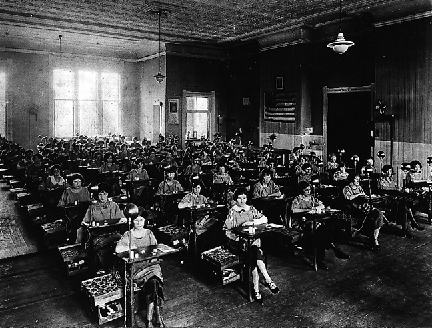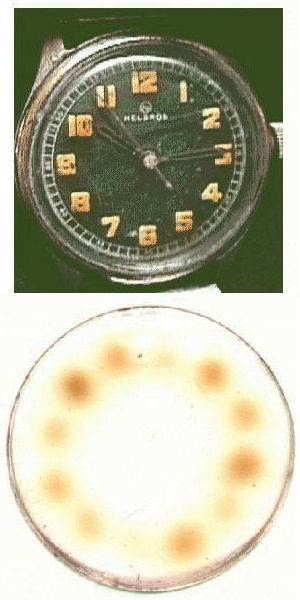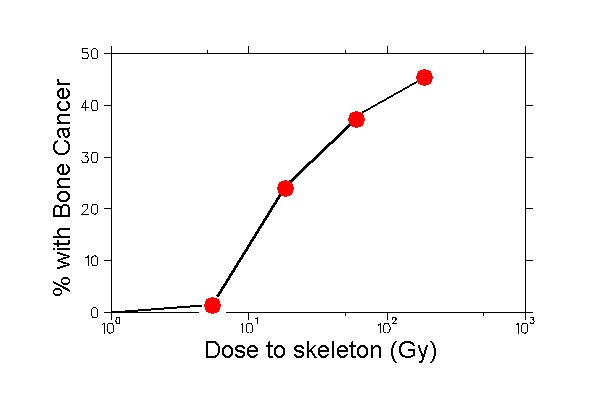

"The Radium Girls", 1920s


In the 1920s,
several US watch companies produced "glow in the dark" dials painted with radio-luminescent
paint, composed of zinc
sulfide (ZnS)
mixed with radioactive radium (226Ra) salts. The employees hired to paint the
dials were mostly young women. The paint was applied to the
numerals with a small brush: as the brush became flattened, the
women "pointed" the
brushes on their tongues between applications, and thereby
ingested a small quantity of radium each time.
Radium is an alpha-particle emitter that is chemically
similar to calcium, and
is therefore a 'bone seeker'.
Once ingested, 226Ra
accumulates in the long bones, irradiates osteoblasts and
other nearby cells in the bone marrow with high-energy,
short-distance alpha radiation, and produces bone
cancer and other genetic damage. The graph shows that the
incidence of bone cancer increases with an increasing "body burden" of 226Ra. [For more information, see "The
Radium Girls"].
Radioactive dials
found wide use in military aircraft in World War II, and radium
watches were manufactured into the 1950s [right]. Modern photo-luminescent
watches are light-activated, and do not use radioactive material.
